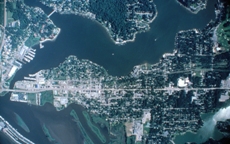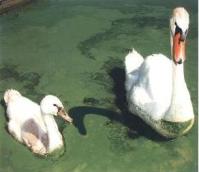Rein in the Runoff: Stormwater Integrated Assessment in Spring Lake - Description
Introduction | Description | Stakeholders | Products | Stormwater Education | Contacts


Photo credit: Progressive AE
Integrated Assessment is a holistic approach that helps generate solutions for management problems: it takes the existing natural and social scientific information relating to a policy or management question and formulates realistic options for the communities and their policy-makers. There are five steps to an Integrated Assessment after a policy or management question has been identified:

Photo credit: Spring Lake-Lake Board
- Document the status and trends of environmental, social and economic conditions related to the policy or management question
- Describe the environmental, social and economic causes and consequences of those conditions or trends
- Provide forecasts of conditions under various policy options
- Provide technical guidance for implementing options
- Provide an assessment of the levels of certainty associated with the information provided in each of the previous steps
"Rein in the Runoff" is addressing the following policy question:
What stormwater management alternatives are available to the Village of Spring Lake and Spring Lake Township that allow for future development and also mitigate the impacts of stormwater and improve the quality of Spring Lake, the Grand River and Lake Michigan?
As this region grows, new development brings with it more and more impervious surfaces - paved roadways, parking lots, and rooftops. Rainwater runs off of these hard, impenetrable surfaces, flowing through storm drains and directly into the surrounding waterways (Spring Lake, the Grand River and Lake Michigan).
With this runoff comes pollutants that have adverse effects on water quality:
- Excess fertilizers, herbicides, and insecticides from agricultural lands and residential areas
- Oil, grease, and toxic chemicals from urban runoff
- Sediment from improperly managed construction sites, crop and forest lands, and eroding streambanks
- Salt from road-deicing and irrigation practices
- Bacteria and nutrients from livestock, pet wastes, and faulty septic systems
The project team is implementing the 5-step Integrated Assessment process with the assistance of a broad array of local and regional Stakeholders.

